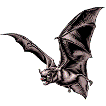Museum, University of Nebraska State

University of Nebraska State Museum: Mammalogy Papers
Document Type
Article
Date of this Version
1999
Citation
Bulletin of the American Museum of Natural History Number 243, 391 pages, 147 figures, 2 tables, 3 appendices
Abstract
The subfamily Borophaginae (Canidae, Carnivora, Mammalia) was erected by G. G. Simpson in 1945 to include seven genera of large, bonecrushing ‘‘dogs’’ in the late Tertiary of the northern continents. As a monophyletic group of canids, the Borophaginae is now known to be much more diverse than was originally envisioned but is confined within the middle to late Tertiary of North America. Fossil records of the borophagines are well represented and members of this prolific clade are often the most common predators in the late Tertiary deposits. Largely due to the Childs Frick Collection at the American Museum of Natural History, borophagines are represented by some of the best materials among fossil carnivorans in anatomical representation, sample size, and stratigraphic density. As a result of this explosive growth of new information, borophagine systematics is now in need of a complete rethinking at a level that could not have been attempted by previous studies. A detailed study of borophagine phylogenetic systematics is presented here, publishing for the first time the entire Frick Collection. A total of 66 species of borophagines, including 18 new species, ranging from Orellan through Blancan ages, are presently recognized. A phylogenetic analysis of these species is performed using cladistic methods, with Hesperocyoninae, an archaic group of canids, as an outgroup. At its base, the Borophaginae has a sister relationship with the subfamily Caninae, which includes all living canids and their most recent fossil relatives. The Borophaginae–Caninae clade is in turn derived from the subfamily Hesperocyoninae. Apart from some transitional forms, most of the Borophaginae can be organized in four major clades (all erected as new tribes or subtribes): Phlaocyonini, Cynarctina, Aelurodontina, and Borophagina. The Borophaginae begins with a group of small fox-sized genera, such as Archaeocyon, Oxetocyon, Otarocyon, and Rhizocyon, in the Orellan through early Arikareean. Relationships among these genera are difficult to resolve due to their primitiveness. Slightly more derived, but still near the base of the Borophaginae, is the Phlaocyonini, a hypocarnivorous clade of the Arikareean and Hemingfordian that includes Cynarctoides and Phlaocyon. These two genera represent divergent approaches toward hypocarnivory. Species of Cynarctoides trend toward selenodonty and remain small in size, whereas species of Phlaocyon specialize toward bunodont dentitions but of increasing size, with an unusual trend toward hypercarnivory by two terminal species in the clade. Four transitional taxa (species of Cormocyon and Desmocyon) occupy intermediate positions between the Phlaocyonini and Cynarctina, and represent a gradual size increase toward mediumsize individuals. The subtribe Cynarctina, the second hypocarnivorous clade, includes Paracynarctus and Cynarctus in the Hemingfordian through Clarendonian, and represents a larger size group than the Phlaocyonini, although there is a tendency toward size reduction among advanced species of Cynarctus. The cynarctines feature the most bunodont dentition known among canids. The next series of transitional taxa (Metatomarctus, Euoplocyon, Psalidocyon, Microtomarctus, Protomarctus, and Tephrocyon) are of medium size and occupy a pectinated sequence that contains a rather diverse set of dental morphology. These include the most hypercarnivorous borophagine Euoplocyon, the peculiarly trenchant Psalidocyon, and the dwarf lineage Microtomarctus. The next clade, Aelurodontina, is the first major hypercarnivorous group and is represented by Tomarctus and Aelurodon in the Barstovian and Clarendonian. The aelurodontines evolve around a more consistent theme of increasingly more hypercarnivorous dentitions with strong premolars, forming a rather linear series from Tomarctus to various species of Aelurodon. The terminal clade Borophagina, sister to the Aelurodontina, begins with the mostly mesocarnivorous Paratomarctus and Carpocyon in the late Barstovian through late Hemphillian. The terminal species of Carpocyon, C. limosus, shows some hypocarnivorous adaptations. Protepicyon in the Barstovian initiates the hypercarnivorous trend in the terminal clade. Epicyon, the largest known canid, is the dominant predator in the Clarendonian and Hemphillian. Finally, an enlarged concept of Borophagus consists of a series of pectinated species terminated by B. diversidens in the late Blancan. Epicyon and Borophagusare the most highly evolved in their capacity to crush bones. Phylogenetic reconstruction was greatly aided by the high quality of fossil records and the large number of transitional forms. The latter ensures a morphological continuity that facilitates the identification of homoplasies that otherwise could easily be mistaken as synapomorphies. Confidence in the phylogeny is further enhanced by a high congruence between the cladistic rank and the stratigraphic sequence. The temporal and morphological continuity in many borophagine lineages also permits further postulation about their evolutionary processes, such as cladogenetic and anagenetic events. Our considerably enlarged concept of the Borophaginae indicates a much broader trophic diversity than has previously been envisioned. In addition to the commonly recognized hyenalike forms, members of the Borophaginae acquired a wider spectrum of morphologies that surpassed either the hesperocyonine or canine canids. The Borophaginae played broad ecological roles that are performed by at least three living carnivoran families, Canidae, Hyaenidae, and Procyonidae.


Comments
Copyright 1999, American Museum of Natural History.